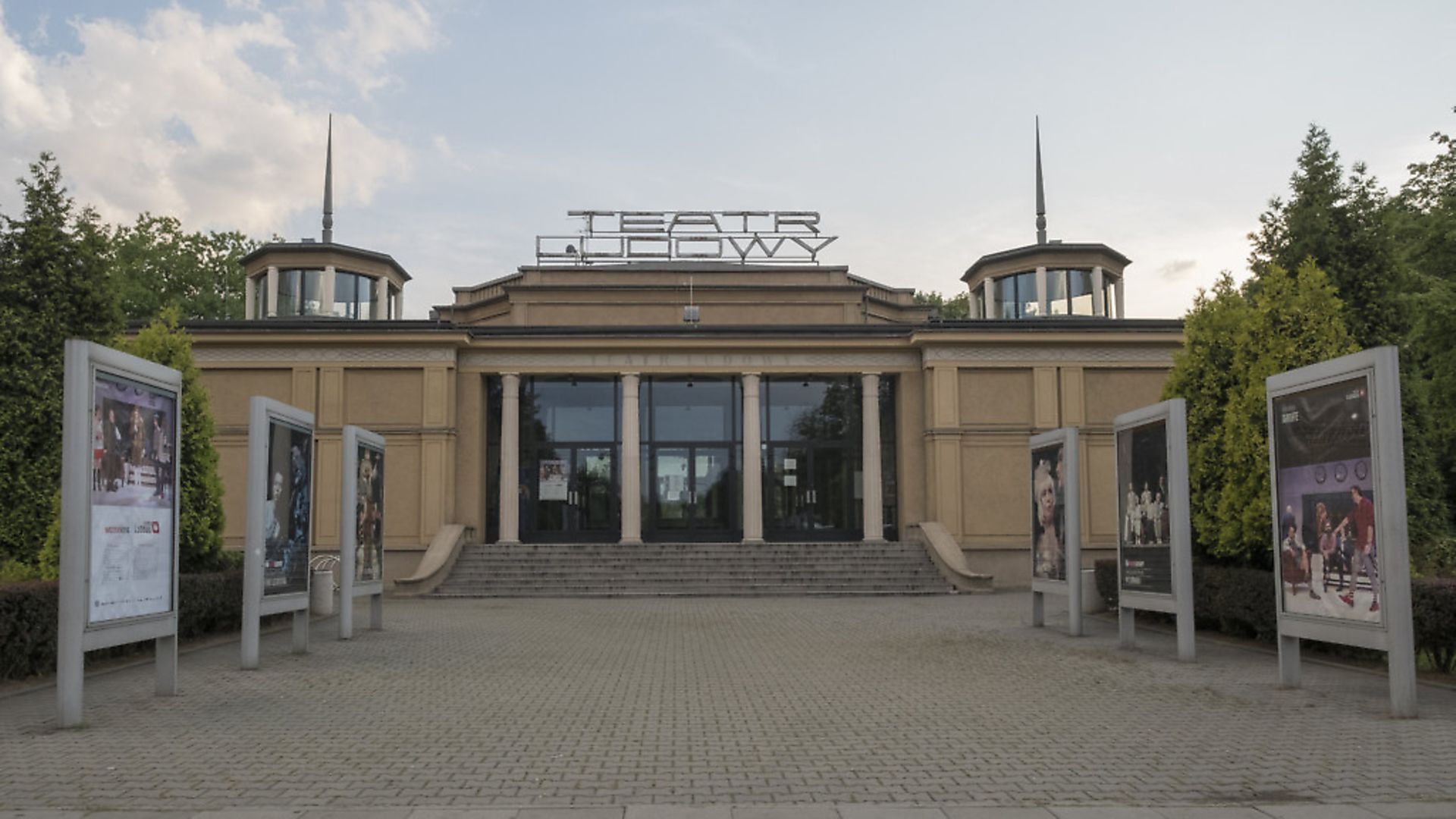
IAN WALKER visits the remarkable Polish town which stands testament to both a failed ideology and proud people.
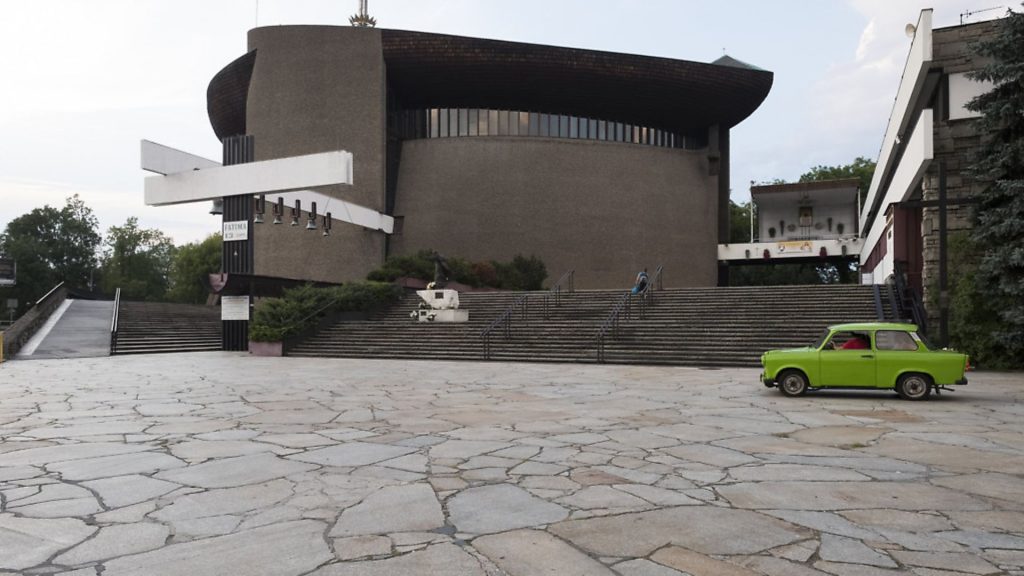
There is a story that when the Marxist Cuban dictator Fidel Castro visited Kraków in 1972, he wasn’t interested in visiting all the touristy stuff that people go and see when they visit the city.
He wasn’t interested in Wawel Castle – that ancient seat of Polish kings (Kraków was Poland’s capital until 1569) which rises dramatically on a limestone outcrop over a bend in the River Vistula. Nor was he bothered by visiting the picturesque Old Town, with its cobbled market square and medieval and baroque architecture.
Instead, Castro wanted to go straight to Nowa Huta – ‘the New Foundry’ in Polish – the giant steelworks and adjoining town that was built just to the east of Kraków in the decade after the Second World War.
This new town was intended to be one of the architectural high points of Stalin’s social realist utopian vision. This was epic modernism. The architecture was rationally laid out and grandiose in execution. Nowa Huta was the heroic communist vision of an engineered society; a place that, as well as forging steel, would forge the new men and women of a bold future. It was the Stalinist ideal; it was architecture as propaganda.
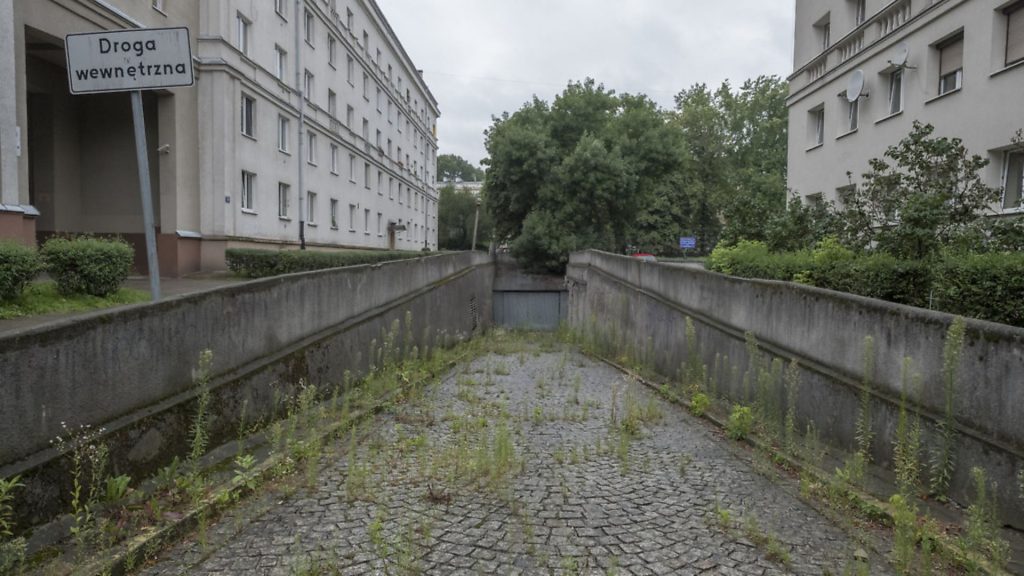
And unlike that ideal, this concrete and steel propaganda is largely extant. You can still walk along the wide boulevards, through wooded parks, past lakes and between the blocks of workers’ apartments.
The names of the streets have changed. Plac Centralny, which was Nowa Huta’s central square and was home to a giant statue of Lenin, is now Ronald Reagan Central Square. Other streets honouring Lenin and the Cuban revolution are now named after Pope John Paul II and W?adys?aw Anders, the Second World War hero deprived of his Polish citizenship by the country’s communist government. But despite the name changes, this worker’s paradise, at least to look at, is as was.
If you arrive by tram at the central square you are immediately confronted by the epic scale of what the architects wanted to achieve. Perfectly proportioned apartment blocks form a semi-hexagonal shape divided by wide roads. (These blocks were to have phones in the stairwell, the kitchens would have built-in radios, the floors would be parquet, there would be elevators).
The central space dividing these blocks has a large public area that leads to a wooded park. Architecturally, the apartments are modernist but also draw on other styles; the influence of classicism, Renaissance colonnades (the architects who designed Nowa Huta were Polish – and the Poles at the time were big on Renaissance architecture), Haussmann’s Paris, even the high-capitalist vernacular of New York’s tenement blocks can be seen in these worker’s apartment blocks.
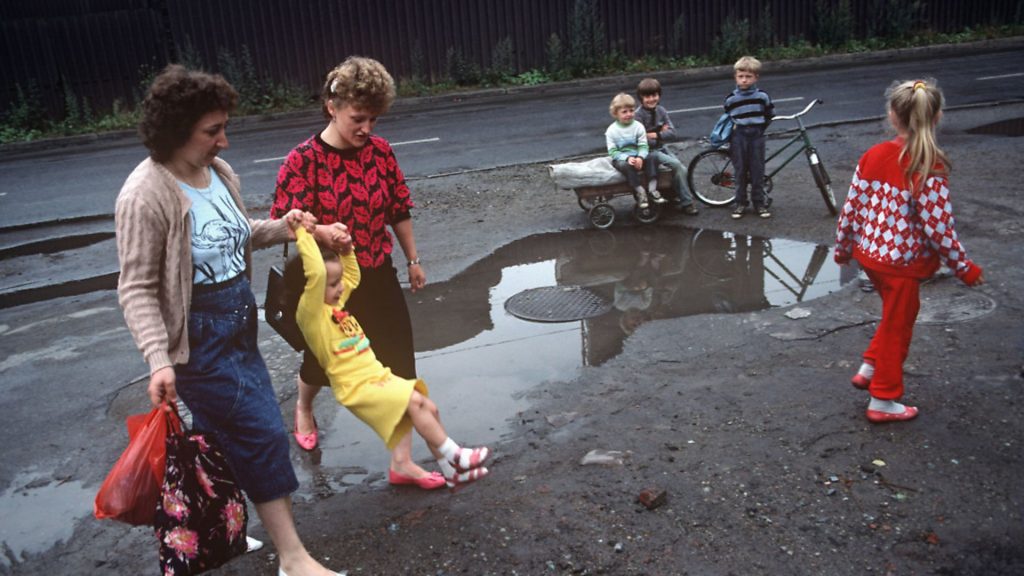
It is as if Stalin and his Polish architectural acolytes were trying to own the past and were trying to outdo everyone – New York, Paris, Venice – in their attempt, as the dictator himself put it, to ‘engineer the human soul’.
But budgets were cut, not all the phones were put in the stairwells and not all the kitchens ended up with radios. And you don’t have to walk that far into Nowa Huta before the quality of the architecture becomes more mundane. In 1956, three years after the death of Stalin, a liberalisation of sorts swept through Poland (the Polish October) and the country’s communist leaders were given greater freedom to manage their development.
This included breaking with the Stalinist social realist architectural style. Instead, the builders of the next phase of Nowa Huta turned towards the modernism of Le Corbusier and the Swedish modular tower block style. This architecture dominated much of post-war urban planning throughout Europe and the debate still continues about whether the driving force behind it was ‘planned-living’ idealism or the cheap building costs. The debate also still continues as to whether these planned towns ever really worked.
Whatever the driving force, post-war Poland faced a housing shortage so these tower blocks were built as quickly as possible. These parts of Nowa Huta look like any other drab, poorly-constructed post-war housing project, the like of which you get from the Gorbals to Gdansk. In Nowa Huta, the apartments were too small. There were no windows in the kitchens. It was just more cheap housing for poor people.
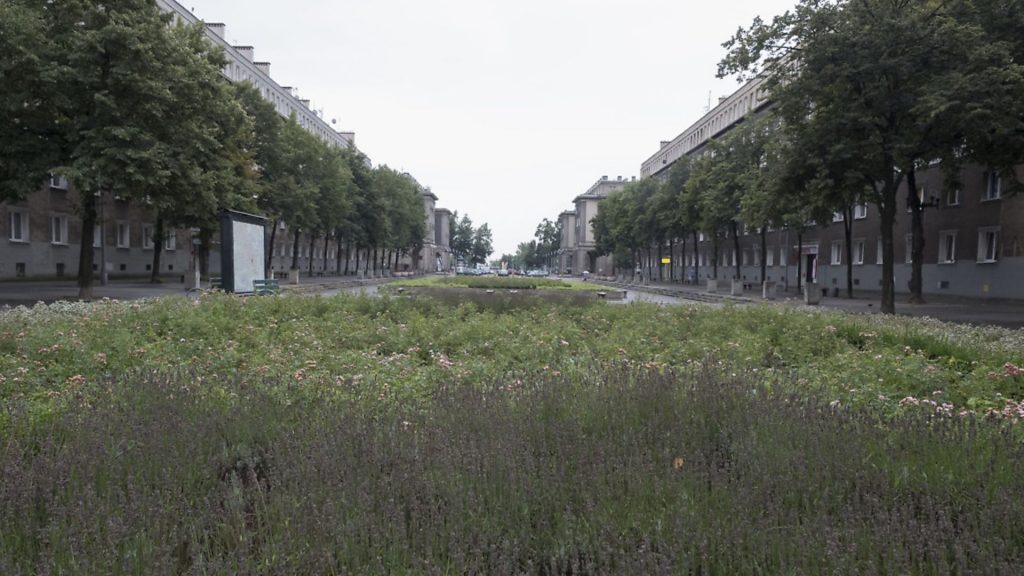
But there is something else that distinguished Nowa Huta from similar, new neighbourhoods constructed throughout Europe during this era. For this was a town created, also, to be a battleground. Nowa Huta was built to the requirements of the Cold War as much as social realist architectural design, and, as such, was designed to be easy to defend, should NATO forces ever punch through the Iron Curtain (or, come to that, should Moscow ever need to quell any, more local unrest).
The wide boulevards of Nowa Huta allowed for the movement of tanks, the apartments were set out to allow for defensive lines of fire to be established and the town was filled with nuclear fall-out shelters, built under apartments, schools, kindergartens and factories. You can visit one of them in the Museum of Poland under the Communist Regime, which is in the town.
But these bland housing projects and tomb-like fallout shelters cannot disguise that original grandiose scale of Nowa Huta, and if Plac Centralny offered one view of this epic vision of a workers’ paradise then the steelworks at the other end of the town offer another.
Like so much here, the plant has been renamed: it once honoured Lenin but is now named after the engineer and inventor Tadeusz Sendzimir. (Like W?adys?aw Anders, he was disapproved of by the country’s post-war communist regime and made his home abroad.) In its heyday as the Vladimir Lenin Works, the site employed up to 38,000 people and produced 5.5 million tons of steel every year. (In 2003, the plant was privatised and it is now owned by the Indian multinational ArcelorMittal, with a workforce of about 4,000).
Stalin measured success in targets and numbers, and the human cost involved in achieving them could be brutal. Back in Britain, after my visit to Nowa Huta, I met a retired Sheffield steelworker. He told me that in the 1970s and 1980s, workers from Nowa Huta would regularly come over to his Yorkshire plant, as part of an exchange. He said they would always return to Poland with a list of reasonably basic health and safety rules that were ignored in their works.
The steelworks, which once covered more than 1,000 hectares, is still huge. It features a grand entrance with the name of the plant written in giant steel letters between two large faux-Renaissance office blocks.
When I visited Nowa Huta, I walked around the edge of the steelworks, out through Kraków’s hinterland, where the countryside seemed intent on reclaiming parts of the city. Nowa Huta was built on what had been fertile farmland: the villagers and farmers who were cleared from their land for the building work were incredulous that such good soil should be used to make steel.
This soil plagued the builders, with mud clogging up everything. It slowed production at the plant and the women who worked on the building site were recognisable when they went into Kraków by the marks that the top of their heavy, mud-proof, rubber boots made on their shins.
Now, that fertile soil means that nature is bursting back around the edges of Nowa Huta, through the cracks in the pavements and through the worn out buildings. Tram lines are buried in grass; tree roots burst up through cracked asphalt; ground floor window are lost behind wild foliage.
For the visitor, Nowa Huta seems a pretty straightforward place to read. Because its construction was so driven by ideology, everything seems obvious. And you can also see how the aspirations within Stalinist eastern Europe only ever worked at the level of propaganda – and even that was done in a desultory way.
Yes, the grand buildings around Plac Centralny are impressive – Castro would have loved them – but much of the housing beyond this facade was substandard. Yes, the steelworks produced steel on an almost unimaginable scale – again, Castro would have been delighted by such productivity – but the output was labour intensive, badly managed and came only at the expense of ruining excellent farmland.
Ultimately all that ideology failed, leaving the town and its steelworks with the weeds, roots and grass growing back through the cement. Nowa Huta feels like a museum dedicated to a terrible, dead ideology and I could end that big, obvious story here. But that would be a mistake, because the town contains another story, a better one that isn’t about Cold War propaganda and blowhard architectural point-scoring.
It is a more human story about lives, experience, conscience and aspirations. It is a story which, much like the grass and tree roots growing back around the edges of Nowa Huta, persists beyond ideology and architecture. It is a story about Poland and its people.
The country suffered terribly during the Second World War. Six million Poles died (about a fifth of the population) and most major cities were devastated. Then, at the end of the conflict, the country found it was effectively occupied by its liberator.
This was not the first time the Russians had occupied Poland. Between 1795 and 1918 the country had been ruled, in various parts and at various times, by the Prussians, the Habsburgs and the Russians. The Poles managed to keep their identity and there were a number of uprisings (in 1794, 1830, 1846 and 1863) as they tried to assert their independence, but all were crushed.
It was only after 1918 – following the Russian revolution, Germany’s defeat and the collapse of the Habsburg empire – that Poland emerged as a free, unified and independent state. But, unsurprisingly for a country that had been occupied for more than a century, the newly-formed state was economically backward. A process of modernisation was immediately begun.
In a rush of nationalist enthusiasm, the port of Gdynia on the Baltic was built and planned industry in the south west of the country was developed. But then, in 1939, the Germans and the Russians invaded (yet again) and Poland was ruined.
When the war finished Poland was nominally free but was effectively occupied by the Russians. In 1946, the Soviet-backed Polish authorities held the ‘Three Times Yes'(Trzy razy tak, or 3×TAK) referendum, which was a vote on a trio of questions to do with replacing the government, settling borders and nationalising industry and agriculture. The questions were designed to consolidate communist rule in the country.
The result was a landslide for the authorities, after they successfully rigged the vote across Poland – everywhere, that is, except in Kraków. The city, which the exception of its Jewish population (the Kraków ghetto was liquidated from June 1942 to March 1943, with its population sent to the camps at Belzec, P?aszów and Auschwitz, just 40 miles away), emerged from the war relatively unscathed and it quickly assumed its role as Poland’s main intellectual, artistic and cultural centre.
This put it at odds with the Stalinist authorities and the tension reached its zenith with the referendum. Because Kraków did not allow for the ballot box stuffing, violent coercion and even murder which had been used elsewhere, the city was the one place in Poland that voted overwhelmingly to keep the senate, which could have acted as a bulwark against the Soviet occupiers.
There is some debate as to whether the land just east of Kraków was selected as the site for Stalin’s new giant steelworks because he wanted to punish the city. Józef Cyrankiewicz, the Polish prime minister from 1947 to 1952, declared that Nowa Huta would get rid of Kraków’s musty atmosphere and give the city a ‘socialist imprint’. But there were also some practical reasons for building the steelworks here, including good rail links to the coalfields of Silesia and a large, available workforce.
Regardless of the city’s anti-Stalinist reputation, and the question of whether it was the victim of a spiteful decision, once the scheme was unveiled, it prompted a perhaps surprising response. In their hundreds and thousands, young Poles descended on the site, organised themselves into labour brigades and set themselves to the task in hand.
Why did this happen? It certainly wasn’t coercion by the Soviet-backed authorities. Young Poles wanted to build this new town. In her excellent study of the history of Nowa Huta, Unfinished Utopia, Katherine Lebow makes the very strong case that for many, especially those from peasant backgrounds, Nowa Huta represented the best they could possibly hope for. And for Poland’s educated, urban, young men and woman – who would work as designers or engineers – Nowa Huta felt like a continuation of the inter-war Polish process of modernisation.
The thousands of young people who built Nowa Huta did so because it gave them a future and it gave them skills. It allowed them to turn their backs on their peasant background and to get away from working on land that was too big to be buried in and too small to farm, as it was once said.
The work was hard, the desertion rate was high (about 20%), the people of Kraków were hostile to both the new town and the peasant builders, accommodation was appalling, food was terrible, but for those that stayed Nowa Huta transformed their lives.
This is the secret history of the town. It has nothing to do with Stalinism or ideology. Instead, it is about a generation of young men and women turning their backs on a terrible past and building for their futures. This sense of purpose and achievement defined much of Nowa Huta because many of the people that built the place ended up living and working there. This made the Nowa Hutians peculiar players in the history of Soviet-controlled eastern Europe because they had the sort of confidence that comes only from achievement. They had built something out of nothing and felt they owned it. As such, they became people who were never cowed by the Soviet or Polish authorities. Nowa Huta soon gained a reputation for being a place of resistance, of troublemakers and of people who were always going to get their own way somehow or other.
One of the most famous examples of this is the story of the Lord’s Ark Church (Arka Pana). Obviously, the communist authorities made no provision for a church in Nowa Huta, but the residents wanted one. At first, they erected a cross but in 1960 the authorities tried to remove it, provoking riots. Then, later, the locals demanded a church. Again, the authorities said no. So the people of Nowa Huta just made one. Between 1967 and 1977 the residents built Arka Pana, by hand, brick by brick, in the same way, that they had built their homes. And the first brick was laid by Cardinal Karol Wojty?a – the man who would become Pope John Paul II.
A second example of Nowa Hut-ian resistance is the story of the statue of Lenin, which was unveiled in 1973 in the heart of the town, on Aleja Róz? (Rose Avenue). Many residents didn’t want it and various imaginative attempts were made to either get rid of it or deface it. These included efforts to blow it up and even use a light howitzer to blast its head off. The statue was also covered in paint, and had an old bike and shoes left at its base, with instructions scrawled on a plaque around Lenin’s neck urging him to use the bike or shoes to get out of Nowa Huta.
The statue stayed until 1992 (when it was sold to a Swedish Wild West theme park) but the sustained, bold campaign against it spoke of the community’s rebellious, self-confident streak. It went deeper than such antics though. And was ultimately more successful.
By the late 1970s, the centrally-planned economy of the Eastern Bloc was entering its death throes, and it was the rise of the Polish trade union Solidarnosc that marked the beginning of the end. The movement is most closely associated with the Gdansk shipyard where it was founded in 1980, but its activities in the Nowa Huta steelworks throughout the following decade were just as important.
Of the plant’s 38,000 workers, 29,000 were members of Solidarnosc. Secretly funded by the CIA and openly supported by Pope John Paul II, it was this union, and these workers of Nowa Huta, who exposed the economic and political bankruptcy of the communist project. In the end, this rebellious new town, built to show communism off to the world, was a major player in ending the Soviet Union.
As I headed back to the airport, after my visit, I told my Polish cab driver a story I had heard. A few months before the Berlin Wall fell, flea markets had started to spring up on its western side. These were Poles who were selling antique and vintage items that they had squirrelled away. Somehow, inexplicably, they had crossed apparently impregnable barriers into the West, so as to sell old ormolu mirrors and 19th century silverware.
‘Of course,’ said the driver. ‘That’s the Polish.’
‘What do you mean? I asked.
‘For years we had the Germans on one side of us with all their bullshit, and we had the Russians on the other side of us with all their bullshit. So we just keep low, do what we need to do. We don’t make any fuss and that way we can get to where we want to be.’ I laughed. ‘Ignoring everyone and quietly making your own way through history’.
‘Exactly that,’ he answered.
If you want to read Nowa Huta like a book then the obvious story is all that big themed, loud, ideological stuff that was dumped on people in the last century. But there is another story, not as obvious, much quieter in places. That story – a better one about building homes and churches, and defacing statues – is about the Polish people as they tried to make their own way through history and through all the bullshit. It is one where the human remains.









